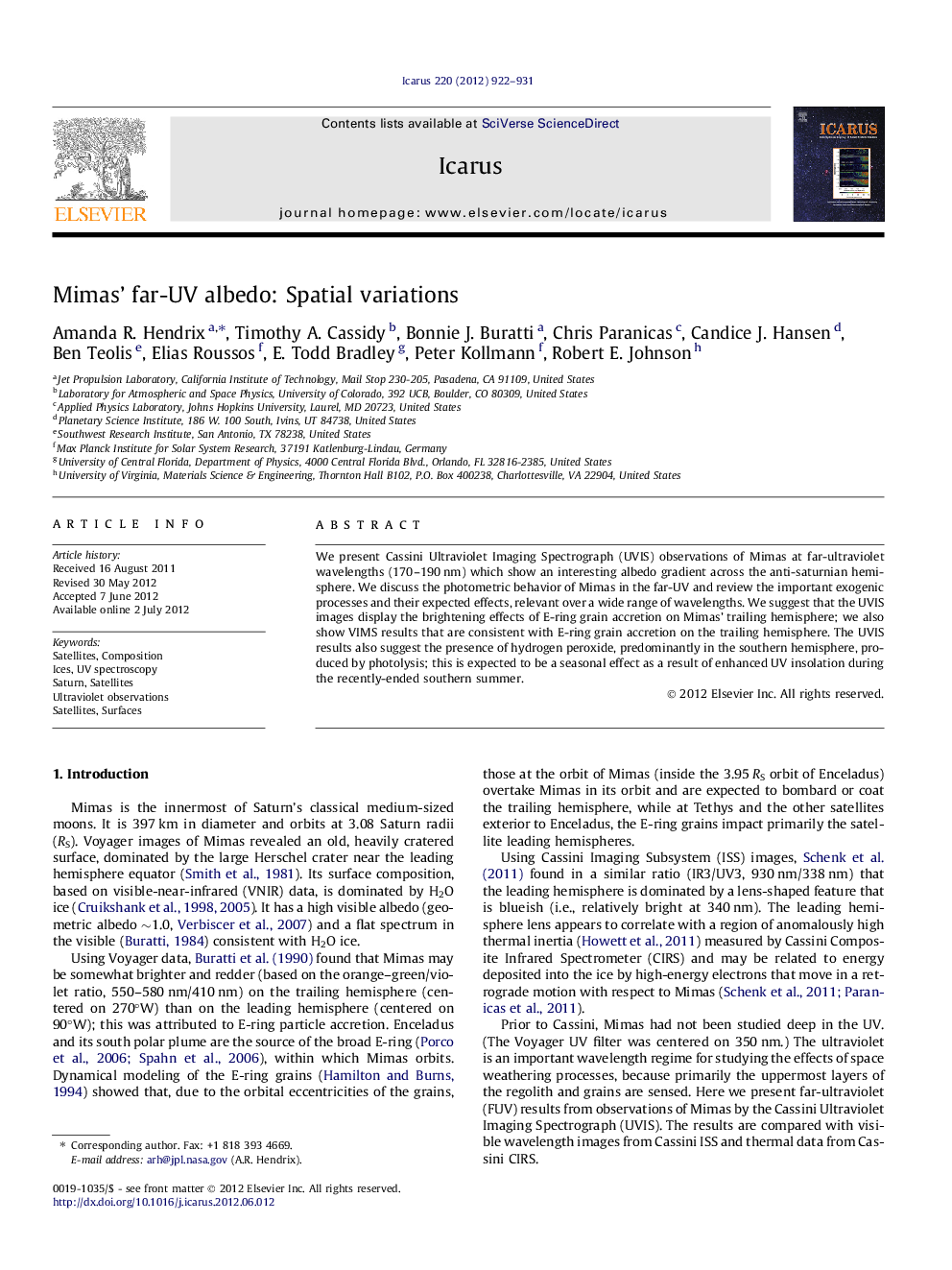| Article ID | Journal | Published Year | Pages | File Type |
|---|---|---|---|---|
| 1773454 | Icarus | 2012 | 10 Pages |
We present Cassini Ultraviolet Imaging Spectrograph (UVIS) observations of Mimas at far-ultraviolet wavelengths (170–190 nm) which show an interesting albedo gradient across the anti-saturnian hemisphere. We discuss the photometric behavior of Mimas in the far-UV and review the important exogenic processes and their expected effects, relevant over a wide range of wavelengths. We suggest that the UVIS images display the brightening effects of E-ring grain accretion on Mimas’ trailing hemisphere; we also show VIMS results that are consistent with E-ring grain accretion on the trailing hemisphere. The UVIS results also suggest the presence of hydrogen peroxide, predominantly in the southern hemisphere, produced by photolysis; this is expected to be a seasonal effect as a result of enhanced UV insolation during the recently-ended southern summer.
► We analyze Cassini UVIS data of Mimas to study far-UV albedo variations. ► We characterize the photometric characteristics of the surface. ► We find an albedo variation across the anti-saturnian hemisphere. ► E-ring grain accretion brightens the trailing hemisphere. ► Photolysis creates H2O2 in the south, likely a seasonal effect.
